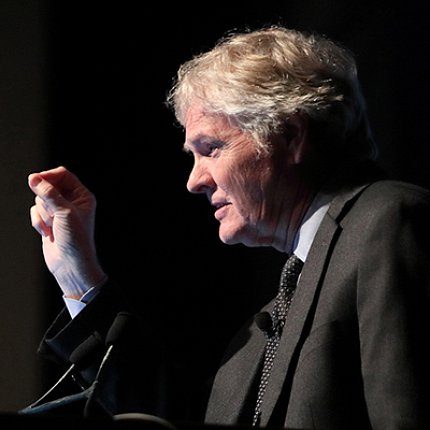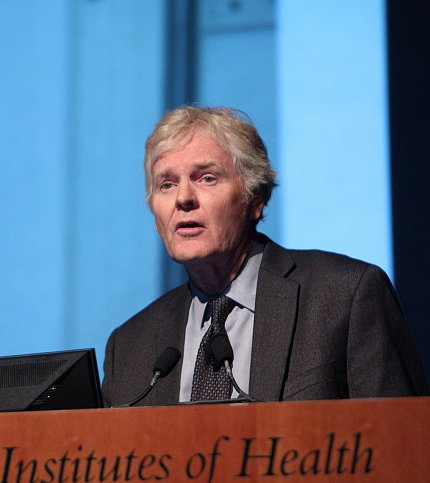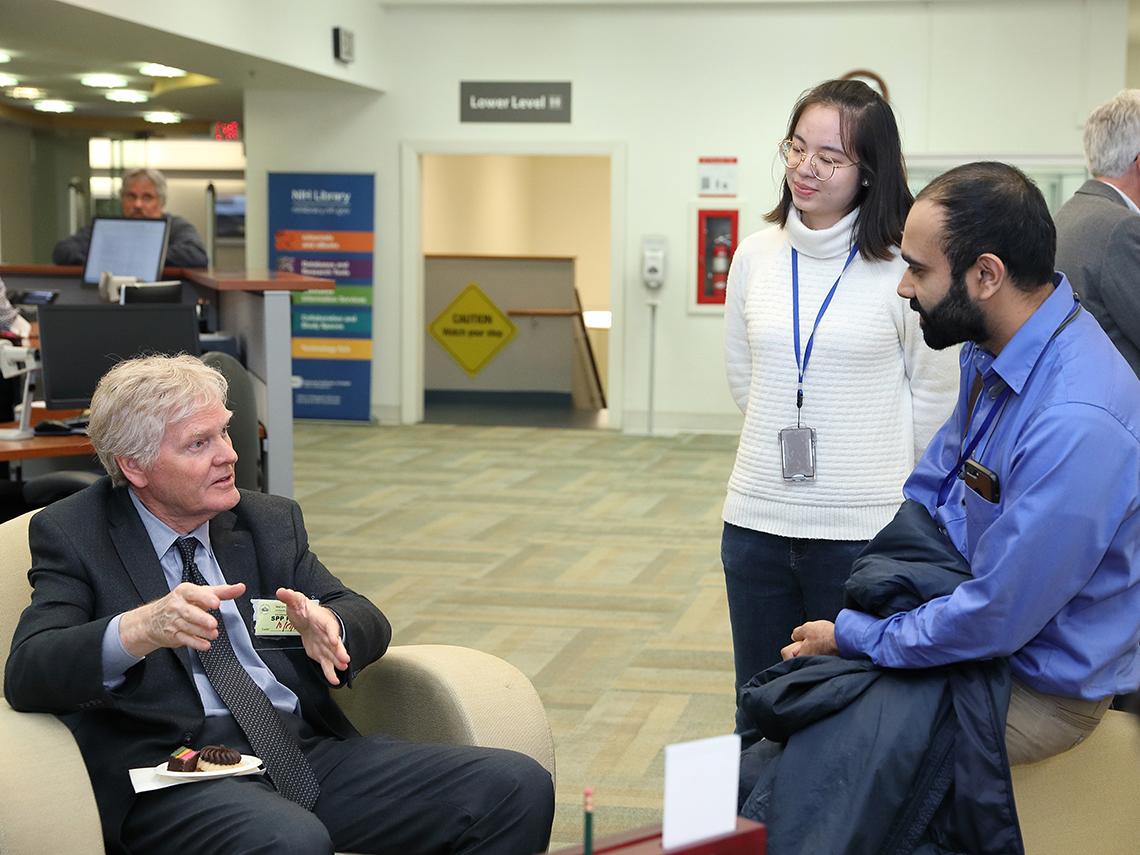Clock Genes Keep Organisms On Schedule

Photo: Chia-Chi Charlie Chang
Biological mechanisms called circadian rhythms regulate biological functions throughout the day in animals, including sleep, eating schedules and metabolism, said Dr. Michael Young.
“We have clocks in our skin, liver, lungs, kidneys, skeletal muscles and, of course, our brains,” said Young, Nobel laureate (2017) and Richard and Jeanne Fisher professor and head of the Laboratory of Genetics at the Rockefeller University. He gave the NIGMS Nobel Laureate Lecture recently in Masur Auditorium.
There are several subtle indicators of the clock in nature, he said. One example is the bee dance. Austrian naturalist Karl von Frisch first observed that honeybees dance to communicate the location of food to other bees. He found two dances: the round and the waggle dance.
The round dance alerts other bees to food sources close to the bee hive while the waggle dance tells others food is farther away from the hive. Even though the inside of the hive is dark, the orientation of the dance changes as the sun changes position.
“Something very similar to this happens with migrating monarch butterflies,” he said. The butterflies have circadian clocks located in their antennae. The antennae also have photoreceptive proteins inside them. Once the antennae sense light, they spur a biological process that allows them to tell time of day. They use these clocks to navigate. Painting the antenna black will disorient the insect.
Regions in the mammalian brain’s hypothalamus called the suprachiasmatic nuclei (SCN) control circadian locomotor rhythms, Young explained. The metabolic activity of the SCN oscillates with day/night changes.
There are several “clock” genes associated with circadian rhythms. Along with two researchers at Brandeis University, Dr. Jeffrey C. Hall and Dr. Michael Rosbash, Young first located and characterized several of them at the molecular level in the fruit fly, Drosophila. One is called per (period). Mutations in this gene can shorten, lengthen or eliminate the circadian rhythm. The gene encodes a protein called PER. During the night, the protein builds up in cells. During the day, the protein breaks down in cells.

Photo: Chia-Chi Charlie Chang
A few years later, Young identified a second gene, called timeless. The gene encodes a protein called TIM. The two proteins, PER and TIM, seek each other out. Once they find each other, they combine and enter a cell’s nucleus. After the proteins enter the nucleus, they block further PER and TIM production. Then the cycle repeats. Several more clock genes have been identified since.
When people travel long distances over a short period of time, such as a flight from New York to Tokyo, they experience jet lag. The condition interferes with the body’s circadian rhythms, by adjusting clocks in many different tissues. Young said the SCN in the brain is among the first to adjust to a new time zone. The circadian clocks in different cells adjust at different schedules.
“The peripheral clocks would lag, and they would lag to different degrees. The liver was one of the slowest to fully adjust,” Young said.
Currently, his lab is studying patients with delayed sleep phase disorder (DSPD), a condition where a person’s sleep is delayed by at least 2 hours beyond a normal bedtime. Consequently, those with the syndrome have a hard time waking up in time for work or other morning activities. This happens day after day in an adult’s life. There are treatments, but they aren’t very effective.

Photo: Chia-Chi Charlie Chang
“The best guess is about 5 percent of the population suffers from this sleep pattern,” Young said. “It’s very resistant to efforts to advance sleep.”
DSPD sometimes runs in families. Recently, his lab discovered a mutation in the cryptochrome-1 gene. They found the mutation after they studied DNA from a patient with the disorder. The patient mentioned others in her family who had difficulty sleeping. Young’s lab reached out and found other members with the mutation. Currently, his lab is working with a researcher from Turkey to study the condition in several families.
“Thanks yet again to the fruit fly,” Young concluded. Without Drosophila, he would never have been able to conduct human studies.
